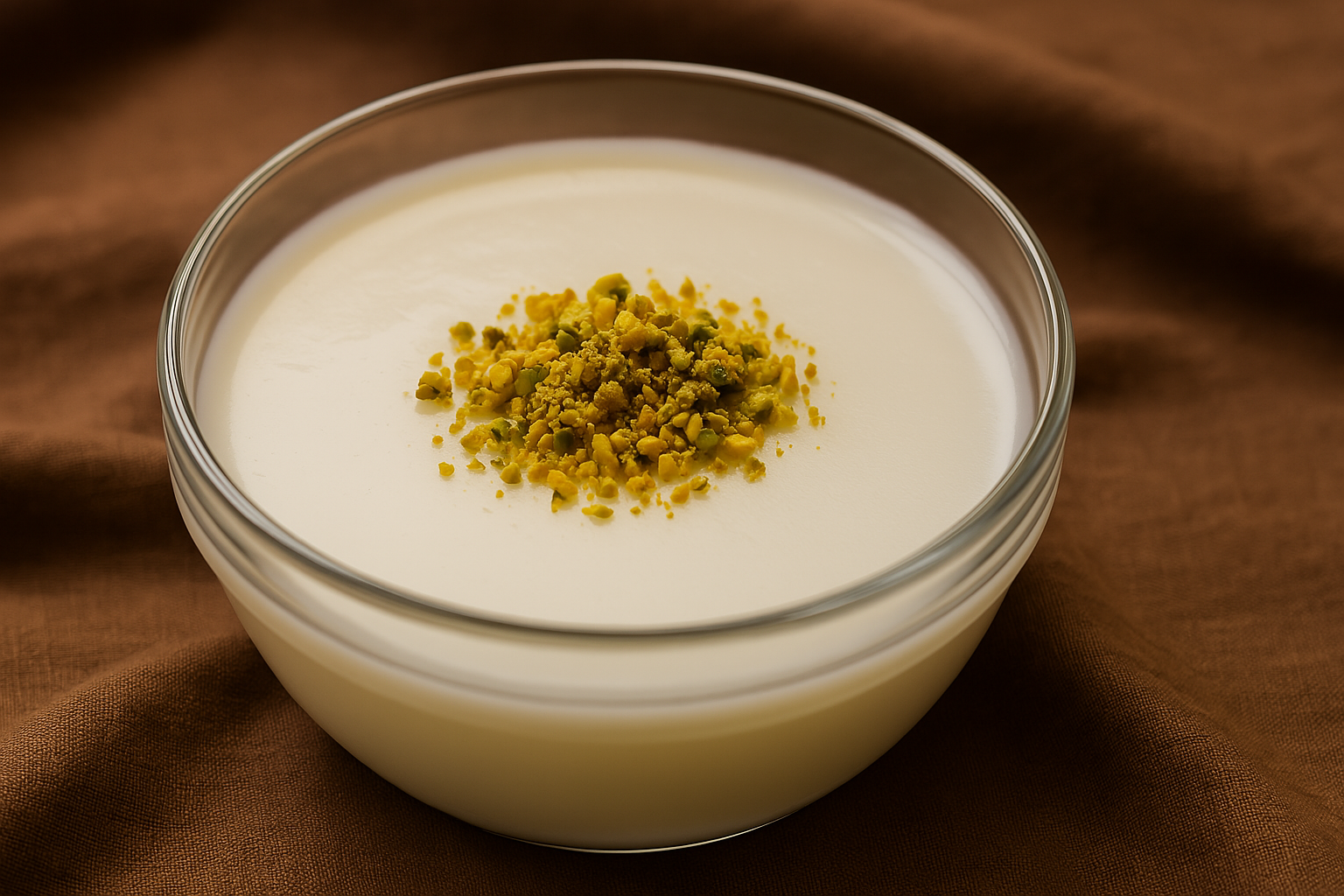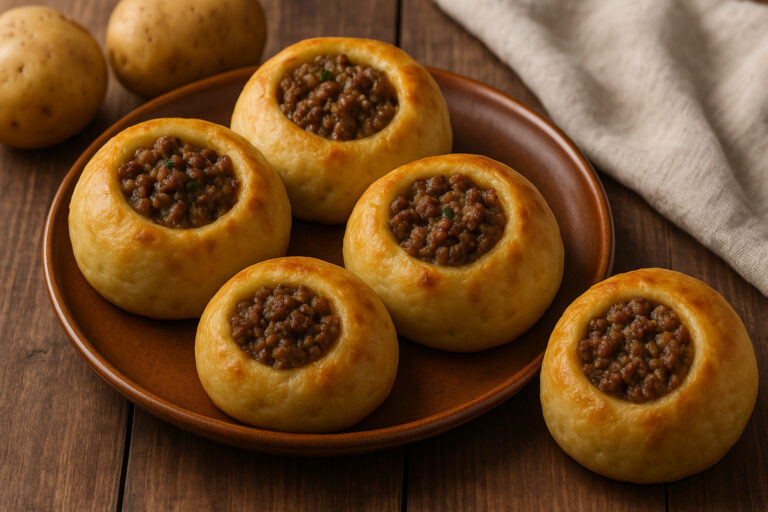cultural significance in mouhalabieh, also spelled as muohalabieh or Mouhalabieh, is a creamy milk pudding that has charmed generations across the Middle East and beyond. This silky dessert is much more than a simple sweet dish—it’s a cultural artifact. With origins that trace back centuries, Mouhalabieh is intertwined with the culinary traditions, social gatherings, and historical heritage of the Arab world. It carries with it the essence of hospitality, celebration, and identity.
A Dessert Rooted in History
Mouhalabieh’s story begins during the Umayyad Caliphate in the 7th century. According to popular lore, the dessert was first made for an Arab general named Al-Muhallab ibn Abi Sufra, hence its name. Originally prepared with rice, milk, and sugar, it has evolved through centuries to become a refined pudding made with milk, sugar, and either cornstarch or rice flour for thickening. Today, it is often delicately flavored with rose water or orange blossom water and topped with pistachios or syrup.
The longevity of Mouhalabieh’s presence in Arab cuisine reflects how food can travel through time, adapting to different cultures while maintaining its original identity. In many Levantine and Gulf countries, Mouhalabieh is considered a staple in both casual and formal settings.
A Symbol of Arab Hospitality
Hospitality is a defining trait of Arab culture, and Mouhalabieh often plays a role in showcasing that warmth and generosity. Offering Mouhalabieh to guests is a traditional gesture, symbolizing care and respect. It’s light, satisfying, and doesn’t overpower the palate, making it the perfect dessert to end a hearty meal.
During Ramadan, this dessert is especially popular. After a long day of fasting, families come together to break their fast with dates, soup, and traditional dishes, followed by a comforting serving of Mouhalabieh. Its cooling nature also provides a soothing contrast to the rich and spicy flavors of Middle Eastern cuisine.
Spiritual and Festive Connections
Mouhalabieh is more than a culinary treat; it also holds spiritual significance. In many households, it is prepared during religious holidays such as Eid al-Fitr and Eid al-Adha. It’s also common to see Mouhalabieh served at special occasions like weddings, births, and even funerals, symbolizing purity and the cycle of life.
The simplicity and elegance of Mouhalabieh align with Islamic principles of modesty and balance. Its preparation and presentation emphasize minimalism, allowing the natural ingredients to shine, much like many other elements of Islamic art and architecture.
Regional Variations Reflect Cultural Diversity
Though its roots are in the Arab world, cultural significance in mouhalabieh has traveled and taken on new forms across regions. In Lebanon and Syria, it’s often topped with a drizzle of orange blossom syrup. Turkey, a similar dish known as muhallebi incorporates cinnamon or crushed nuts. In Egypt, it might be served with rice or even coconut.
These variations illustrate how different cultures adapt a common dish to reflect local tastes, ingredients, and traditions. What remains consistent, however, is the role of Mouhalabieh in communal life—serving as a shared experience at family dinners, community gatherings, and religious celebrations.
A Dessert that Bridges Generations
For many families, Mouhalabieh is more than just dessert—it’s a connection to ancestry and memory. Grandmothers pass down their own versions of the recipe, each with a unique twist. Children grow up with the aroma of rose water wafting from the kitchen, associating it with comfort and love. It’s a dessert that carries stories, memories, and identity across generations.
In diasporic Arab communities around the world, making Mouhalabieh becomes a way of preserving cultural roots. Even in places far from the Middle East, the creamy texture and floral aroma of this dessert evoke a sense of belonging and nostalgia.
Culinary Simplicity with Deep Meaning
At first glance, Mouhalabieh seems like a very simple dessert. There are no complex layers, no extravagant garnishes, and no overpowering flavors. Yet, this simplicity is exactly what makes it so culturally significant. In Arab culture, humility and balance are highly valued, and Mouhalabieh exemplifies both.
Its ingredients—milk, sugar, and starch—are basic, accessible, and nourishing. The addition of floral water turns it into something delicate and refined. In essence, Mouhalabieh teaches that simplicity does not mean lack of depth. Rather, it highlights how minimalism can express richness in a different, more profound way.
Cultural Preservation Through Cuisine
In today’s fast-paced, globalized world, traditional recipes like Mouhalabieh play a crucial role in cultural preservation. They offer a taste of heritage in a time when many cultures are blending and shifting. Preparing and sharing this dessert is an act of remembrance, a way to keep language, customs, and values alive.
Food has always been a powerful medium of storytelling. Every bite of Mouhalabieh carries echoes of ancient kitchens, bustling bazaars, and long family feasts. It is a living artifact of Arab culture, adapting to modern kitchens without losing its soul.
Mouhalabieh in Contemporary Cuisine
The role of Mouhalabieh continues to evolve. Chefs and food enthusiasts across the globe are reimagining the dish in innovative ways. From vegan versions using almond or oat milk to gourmet presentations in high-end restaurants, Mouhalabieh is gaining a new identity without losing its cultural core.
Its elegance, lightness, and gluten-free nature make it an appealing choice for modern diets. It also photographs beautifully, which has helped it gain popularity on social media platforms, where food presentation is often as important as taste. Despite these modern touches, the heart of Mouhalabieh remains unchanged—rooted in tradition, memory, and meaning.
Educational Importance of Traditional Dishes
Including Mouhalabieh in school events, cultural festivals, and cooking classes is also an educational way to promote cultural appreciation. It allows people of all backgrounds to engage with Arab culture through a sensory experience. Tasting the dessert often sparks curiosity about its origin, ingredients, and cultural context, opening doors for dialogue and mutual respect.
Cultural education through cuisine like Mouhalabieh fosters empathy and understanding in multicultural societies. It serves as an edible bridge between communities, showing that while we may come from different places, the joy of sharing food is a universal language.
Conclusion
Mouhalabieh is more than just a dessert. It is a cultural emblem that carries centuries of history, hospitality, and heart. Its creamy texture and fragrant notes may captivate the senses, but it’s the deeper meanings behind the dish that make it truly unforgettable. From religious traditions and festive occasions to everyday family meals, Mouhalabieh continues to be a beloved staple across the Middle East and around the world.
As generations continue to evolve, the role of Mouhalabieh remains as strong as ever. Whether served in a humble home kitchen or reimagined in a gourmet restaurant, it still speaks the same language: one of warmth, connection, and cultural pride.
Frequently Asked Questions
What is Mouhalabieh made of?
Mouhalabieh is a milk-based pudding typically made with milk, sugar, and a thickening agent such as cornstarch or rice flour. It is often flavored with rose water or orange blossom water and topped with nuts or syrup.
Is Mouhalabieh served hot or cold?
Mouhalabieh is traditionally served cold. It is chilled after being cooked and then garnished before serving, making it a refreshing dessert, especially in warm climates.
Is Mouhalabieh the same as Turkish muhallebi?
They are very similar. Both are milk-based puddings with similar preparation methods. However, Turkish muhallebi may include different flavorings such as cinnamon or mastic, and there are regional variations across Turkey.
Why is Mouhalabieh culturally significant?
Mouhalabieh is significant because it represents centuries of Arab culinary tradition. It plays a role in hospitality, religious festivities, and family life, making it a meaningful dish beyond its taste.
Can Mouhalabieh be made vegan?
Yes, vegan versions of Mouhalabieh can be made using plant-based milk like almond, soy, or oat milk. The texture and flavor can be preserved with the right thickening agents and natural flavorings.
What occasions is Mouhalabieh commonly served on?
Mouhalabieh is often served during Ramadan, Eid, weddings, family dinners, and other cultural or religious gatherings. It is a versatile dessert suitable for both everyday meals and special celebrations.







